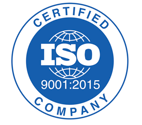
When the products that you manufacture are so integral to the health and well-being of your customers, it is of utmost importance that your products be produced with quality in mind. To create a culture of quality within your organization, sometimes it’s best to look back in order to proceed. By implementing practices such as 360 degree talent assessments, mock recalls, and even something as simple as reviewing the FDA warning letters issued each month you ensure that your team is working with quality in mind and consistently implementing best practices. Below are warning letters issued by the FDA in October 2017.
Kelyniam Global, Inc.
During an inspection of the Kelyniam Global, Inc. firm located in Canton, Connecticut, an investigator from the United States FDA determined that the firm manufactures patient-specific cranial implants and maxillofacial implants.
The inspection revealed that these devices are adulterated within the meaning of section 501(h) of the Act, 21 U.S.C. § 351(h). The methods used in, or the facilities or controls used for, their manufacture, packing, storage, or installation are not in conformity with the current good manufacturing practice requirements of the Quality System regulation found at Title 21, Code of Federal Regulations (CFR), Part 820.
These violations include, but are not limited to, the following:
1. Failure to establish and maintain design change procedures, pursuant to 21 CFR 820.30(i).
For example, the firm failed to perform design validation for the following significant design changes:
-
A product modification was implemented, adding a new implant feature to cranial implants, identified as the Temporal Suture System (TSS), which was requested under Intake Request 001292, opened on 03/07/2014.
-
The Integrated Fixation System was added as an option to use with the implants, which consists of an alternate fixation method utilizing tabs with the cranial implant, along with a fixation protocol. The system also included a recommendation for using a compatible screw type, and they did not ensure that the labeling specifies requirements for compatible screws.
-
The Integrated Fixation System was changed to include a counterbore to countersink design in 2014, and the change was not reflected in the instructions for use until 2016.
-
The Integrated Fixation System’s recommended screw specifications were changed in 2016, and validation/verification has not been completed to date.
2. Failure to evaluate complaints to determine whether the complaint represents an event which is required to be reported to the FDA under 21 CFR Part 803, Medical Device Reporting, pursuant to 21 CFR 820.198(a)(3). For example:
-
The firm failed to investigate the reason for medical devices that are re-ordered since 2015. One re-order (b)(4), for a PEEK-IM1004 implant, involved a patient infection and the firm failed to investigate the matter further, including evaluation for MDR reportability.
-
Complaint investigations do not require evaluating if there was a related injury, death, infection, or extension in surgery. The Medical Device Reporting Form, QF-85-01-1, is also not being used to evaluate complaints. Examples of complaints in which the form was not completed include: Intake Request 1408 (for implant fit problems); Intake Request 1416 (for implant fit problems); and Intake Request 1452 (for some perfusion holes missing and placed incorrectly).
3. Failure to demonstrate that the device was manufactured in accordance with the device master record, pursuant to 21 CFR 820.184.
4. Failure to validate a process whose results cannot be fully verified by subsequent inspection and test according to established procedures, pursuant to 21 CFR 820.75(a). For example:
-
The (b)(4) sterilization validation for custom skull implants was performed using (b)(4) that had not undergone the complete manufacturing process. Further, there is no review and approval of this report by management.
-
There is no process validation for the manufacture of cranial implants on CNC equipment, in addition to the fixture that is used with the CNC equipment for machining of cranial and maxillofacial implants.
-
The cleaning validation for the implants consists of (b)(4) test reports, which do not identify the specific product being tested. Further, there is no review and approval of these reports by your firm, nor explanation for the test results being acceptable.
5. Failure to establish procedures for acceptance of incoming product, pursuant to 21 CFR 820.80(b).
For example:
-
The supplier was changed for the PEEK used in the manufacturing of the implants, however, the PEEK Material Change Documentation, A10CSI-0-20, does not require that the properties of the new material meets a standard or a defined set of specifications.
-
The Incoming Material Inspection Tag for PEEK requires the presence of a certificate of compliance (COC), however, there are no specifications established for which the COC should be compared against. Purchasing Procedure, QOP-74, requires that devices with a Certificate of Conformance (COC) be checked for “completeness,” however, does not define the criteria which must be met.
6. Management with executive responsibility has not reviewed the suitability and effectiveness of the quality system, pursuant to 21 CFR 820.20(c).
7. Failure to establish corrective and preventive actions procedures, pursuant to 21 CFR 820.100(a).
The FDA’s inspection also revealed that the Kelyniam Customized Cranial/Craniofacial Implants are adulterated under section 501(f)(1)(B) of the Act, 21 U.S.C. § 351(f)(1)(B), because the firm does not have an approved application for premarket approval (PMA) in effect pursuant to section 515(a) of the Act, 21 U.S.C. § 360e(a), or an approved application for an investigational device exemption under section 520(g) of the Act, 21 U.S.C. § 360(j)(g). The devices are also misbranded under section 502(o) of the Act, 21 U.S.C. § 352(o), in that a notice or other information respecting the modification to the device was not provided to the FDA as required by section 510(k), 21 U.S.C. 360(k), and 21 CFR 807.81(a)(3)(i).
Specifically, the firm made significant design changes to these devices, and did not submit a 510(k). For example, the firm modified the Integrated Fixation System. The performance of bone screws (e.g., maximum screw torque, screw retention strength) used to attach the Kelyniam Custom Skull Implant (CSI) to the native bone with (b)(4) is affected by bone screw and bone plate design features. The change from CSI fixation using bone plates and bone screws to CSI with Integrated Fixation System fixation using (b)(4) is an operating principle change which leads to the submission of a 510(k). Additionally, the Kelyniam Custom Skull Implant (CSI) is provided with 0.125” diameter pressure relief holes, equally spaced over the contour of the implant with 0.625” centerline spacing and a minimum of 0.500” edge margin. Kelyniam sales and marketing documentation describes CSI (b)(4) instead of pressure relief holes over the entire implant. The TSS implant with larger solid areas without (b)(4) than the cleared CSI may result in safety and effectiveness concerns regarding increased intracranial pressure resulting from fluid collection beneath the secured implant. CSI option #2 Temporal Suture System is an operating principle change which leads to the submission of a 510(k). Please refer to the guidance document entitled “Deciding When to Submit a 510(k) for a Change to an Existing Device” for further insight. (Source)
Vital Laboratories
The U.S. FDA inspected the drug manufacturing facility, Vital Laboratories Private Limited Plant-II. During our inspection, the investigator observed specific deviations including, but not limited to, the following.
1. Failure to ensure all production deviations are reported and evaluated, and that critical deviations are investigated and the conclusions are recorded.
2. Failure to adequately document the completion of each significant step in the batch production records with signatures of the persons performing and directly supervising or checking each critical step in the operation.
3. Failure to adequately investigate and document out-of-specification results and implement appropriate corrective actions.
4. Failure of your quality unit to adequately perform annual product reviews.
FDA cited similar CGMP deviations at other facilities in the firm’s network. It was classified as unacceptable for drug manufacturing as a result of observations that were similar to those observed during Plant-II’s inspection. These repeated failures at multiple sites demonstrate that your company’s oversight and control over the manufacture of drugs is inadequate. Based upon the nature of the deviations we identified at your firm, we strongly recommend engaging a consultant qualified to evaluate your operations and assist your firm in meeting CGMP requirements.
Failure to correct these deviations may also result in FDA refusing admission of articles manufactured at Vital Laboratories Private Limited Plant-II, into the United States under section 801(a)(3) of the FD&C Act, 21 U.S.C. 381(a)(3). Under the same authority, articles may be subject to refusal of admission, in that the methods and controls used in their manufacture do not appear to conform to CGMP within the meaning of section 501(a)(2)(B) of the FD&C Act, 21 U.S.C. 351(a)(2)(B). (Source)
Aztex Enterprises Ltd.
The U.S. FDA inspected the drug manufacturing facility, Aztex Enterprises Ltd. and noted significant violations of current good manufacturing practice (CGMP) regulations for finished pharmaceuticals.
Because the methods, facilities, or controls for manufacturing, processing, packing, or holding do not conform to CGMP, the drug products are adulterated within the meaning of section 501(a)(2)(B) of the Federal Food, Drug, and Cosmetic Act (FD&C Act), 21 U.S.C. 351(a)(2)(B).
During the inspection, the investigator observed specific violations including, but not limited to, the following.
1. The firm failed to establish an adequate quality control unit with the responsibility and authority to approve or reject all components, drug product containers, closures, in-process materials, packaging materials, labeling, and drug products (21 CFR 211.22(a)).
Purchase of drugs from a manufacturer on FDA Import Alert 66-40
The inspector reviewed a list of their suppliers, which included a supplier that has been listed on FDA Import Alert 66-40, Detention Without Physical Examination of Drugs From Firms Which Have Not Met Drug GMPs. As indicated on Import Alert 66-40, drugs manufactured by that supplier are subject to refusal of admission to the United States because they do not conform to CGMP. Because the firm used adulterated materials that you purchased from a firm on Import Alert 66-40, the drugs manufactured also are adulterated under the FD&C Act.
Based upon the nature of the violations identified at the firm, the FDA strongly recommended engaging a consultant, qualified as set forth in 21 CFR 211.34, to assist in meeting CGMP requirements. (Source)
Magellan Diagnostics, Inc.
During an inspection of Magellan Diagnostics, Inc., investigators from the United States FDA discovered violations at the firm which manufactures the LeadCare Blood Lead Testing System, the LeadCare II Blood Lead Testing System, the LeadCare Ultra Blood Lead Testing System, and the LeadCare Plus Blood Lead Testing System (collectively, the “LeadCare Systems”). Under section 201(h) of the Federal Food, Drug, and Cosmetic Act (the Act), 21 U.S.C. § 321(h), these products are devices because they are intended for use in the diagnosis of disease or other conditions or in the cure, mitigation, treatment, or prevention of disease, or to affect the structure or any function of the body.
The inspection revealed that the firm’s LeadCare II and LeadCare Ultra Systems are adulterated under section 501(f)(1)(B) of the Act, 21 U.S.C. § 351(f)(1)(B), because the firm does not have an approved application for premarket approval (PMA) in effect pursuant to section 515(a) of the Act, 21 U.S.C. § 360e(a), (b)(4). The LeadCare II and LeadCare Ultra Systems are also misbranded under section 502(o) the Act, 21 U.S.C. § 352(o), because the firm did not notify the agency of its intent to introduce these devices into commercial distribution, in that a notice or other information respecting the modifications to each of these devices was not provided to FDA, as required by section 510(k) of the Act, 21 U.S.C. § 360(k), and 21 CFR 807.81(a)(3). Specifically,
1. The firm made significant labeling and design changes to the LeadCare II System after FDA’s clearance of that device on October 6, 2005.
2. The firm made significant labeling and design changes to the LeadCare Ultra System after FDA’s clearance of that device on August 20, 2013.
For a device requiring premarket approval, the notification required by section 510(k) is deemed satisfied when a PMA is pending before the agency. It was also noted that, during the time the 510(k) for the LeadCare Plus System was pending, the firm added to the proposed labeling an instruction that users implement a minimum 24-hour incubation time for the blood-treatment reagent mixture prior to analysis. While the firm submitted proposed labeling to FDA that reflected this change, the firm described revisions made to the proposed labeling as “minor updates” and did not update the 510(k) submission to explain the significance of this change.
This inspection also revealed that your firm’s LeadCare Systems are adulterated within the meaning of section 501(h) of the Act, 21 U.S.C. § 351(h), in that the methods used in, or the facilities or controls used for, their manufacture, packing, storage, or installation are not in conformity with the current good manufacturing practice requirements of the Quality System regulation found at 21 CFR Part 820. (Source)
One of the common themes of these warning letters is the FDA recommends that many of the companies cited work with consultants to help them rectify the violations noted by the FDA. Consultants come armed with information and recommendations for solutions that are both cost- and time-efficient.
Consultants can be helpful in more than just remediation situations but can also help you identify and resolve possible violations before the FDA becomes involved. By learning from the mistakes of your industry peers and implementing change in advance of a formal warning letter or FDA 483 you can help create a culture of continuous quality within your organization.




